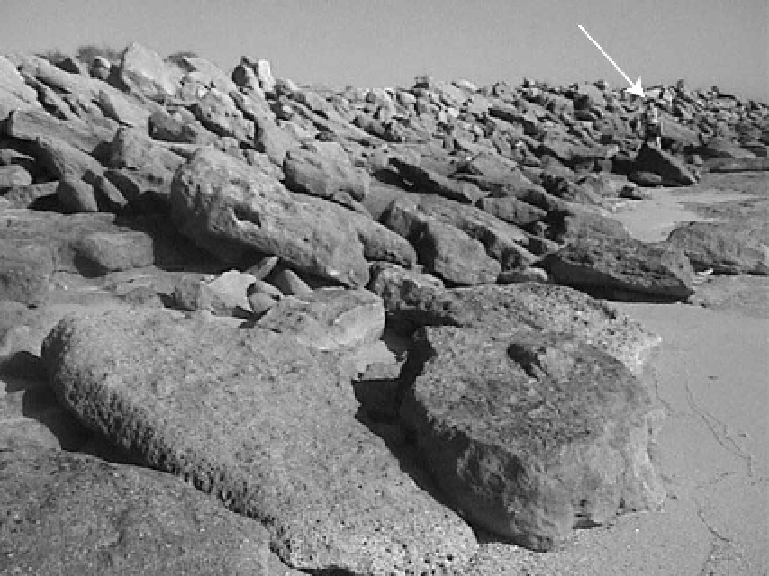Geoscience Reference
In-Depth Information
Figure 5.11.
Boulder ridge near NW Cape, Western Australia. Note the imbrication
of clasts and the person standing in the background for scale.
Boulder deposits
Many coasts worldwide display large lithic boulders on rock platforms,
and sometimes on top of cliffs tens of metres high. Often these boulders are
clustered into groups that contain from tens to many hundreds of individual
clasts, some of which can weigh over 100 tonnes, and have
a
axes as long as
6m(Fig5.11). Boulders within these groups are also often imbricated and have
aligned
a
axes. Sometimes they may contain barnacles and/or oysters on their
surface which suggests they originated in the near-shore environment. The same
is true when the boulders display clear imbrication and axis alignment. Often
comparisons with accumulations of core stones due to deep weathering bear no
resemblance to the depositional fabric of the imbricated boulder fields, nor do
rock falls from cliff collapse (Nott, 1997). However, a boulder located at the coast
is not necessarily evidence that it arrived at its present position following trans-
port by waves. The possibility of rock falls and deep weathering always needs
to be addressed. Where these processes can be eliminated, and imbrication and
alignment are present, there is little doubt that those boulders have experienced
wave transport. But the question remains as to what type of wave was likely to
have been responsible.

Search WWH ::

Custom Search